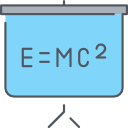
Using organizational culture assessment instrument to analyze the organizational culture of Redtop Hotel Jakarta, Indonesia
The Organizational Culture (OC) has increasingly becoming important in the hospitality industry due to the increase of competition and how customers are more demanding and well educated. However, diagnosing an OC may be difficult and it was believed that hospitality executives may see their culture as positive and effective when the evidence might be otherwise the opposite. Because of its importance in business success nowadays, this research attempted to analyze the current and preferred OC of Redtop Hotel Jakarta, Indonesia by using the Organizational Culture Assessment Instrument (OCAI) developed by Cameron & Quinn (2011). The sample size consisted of full-time members selected using proportionate stratified random sampling where this study also aimed to determine whether significant differences in OC perspectives between Subordinates and Supervisors (S&S) vs. Managers and Executives (M&E) existed regardless of departments. By assessing the Six Key Dimensions of Culture (SKDC), the OC will be identified. It was believed that culture incongruence in the SKDC lead to internal conflicts, thus this study also aimed to analyze the SKDC whether they are congruent to one another. The results indicated that hierarchy culture dominated the overall current culture and the clan culture was the most preferred. In the current situation, both S&S and E&M perceived hierarchy as 1st, market 2nd, clan 3rd, and adhocracy 4th. Both also preferred the clan culture the most. However, while the S&S preferred to have adhocracy as 2nd, hierarchy 3rd, and market 4th, the E&M preferred to have hierarchy as 2nd, market 3rd,rnand adhocracy 4th. The overall scores and ranking among the SKDC were almost congruent in the current situation (hierarchy scored the highest and adhocracy the lowest in most aspects). The preferred culture of all aspects were reasonably congruent, having clan culture dominating all aspects. However, three of the aspects had market the least and the other three had hierarchy the least.
Availability
| B01458 | (wh) | Available |
Detail Information
- Series Title
-
-
- Call Number
-
1458
- Publisher
- : Swiss German University., 2013
- Collation
-
-
- Language
-
English
- ISBN/ISSN
-
-
- Classification
-
NONE
- Content Type
-
-
- Media Type
-
-
- Carrier Type
-
-
- Edition
-
-
- Subject(s)
- Specific Detail Info
-
-
- Statement of Responsibility
-
-
Other version/related
No other version available
File Attachment
Comments
You must be logged in to post a comment
 Computer Science, Information & General Works
Computer Science, Information & General Works  Philosophy & Psychology
Philosophy & Psychology  Religion
Religion  Social Sciences
Social Sciences  Language
Language  Pure Science
Pure Science  Applied Sciences
Applied Sciences  Art & Recreation
Art & Recreation  Literature
Literature  History & Geography
History & Geography